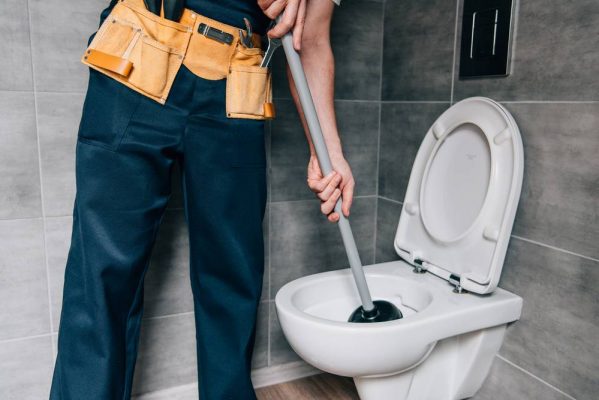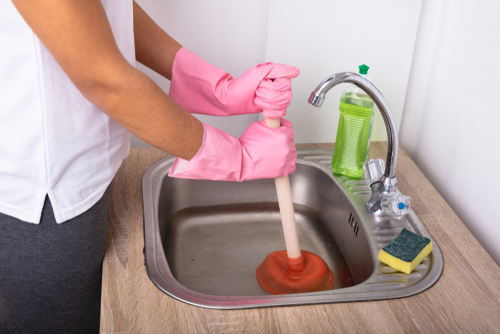Are you looking for ideas concerning How to Unclog Your Sink with a Plunger?

Introduction
Correct maintenance of house drains pipes is necessary for preventing blockages and making sure smooth water circulation. One of the secret tools in every property owner's toolkit is the bettor, along with various drainpipe cleansers designed to tackle persistent clogs successfully. This article discovers exactly how to make use of bettors and drainpipe cleansers successfully to maintain your drains flowing easily.
Section 1: Comprehending Bettors
Kinds of Plungers
There are several kinds of plungers readily available, each designed for different sorts of drains and clogs. The most typical types include cup bettors, flange plungers, and accordion bettors.
Just How Plungers Job
Bettors deal with the concept of developing pressure and suction to displace obstructions. When appropriately used over a drain, they develop a vacuum cleaner that can pull out particles or break up obstructions.
Choosing the Right Bettor
Selecting the appropriate plunger relies on the sort of drain and the nature of the obstruction. Mug plungers are suitable for sinks and bathtubs, while flange bettors are better suited for commodes due to their layout.
Usual Errors with Bettors
Staying clear of these blunders makes sure effective plunging: inappropriate seal around the drain, insufficient force, and not clearing bordering debris.
Area 2: Utilizing Plungers Efficiently
Preparation
Before plunging, guarantee the plunger covers the drainpipe entirely and creates a tight seal. Clear any visible debris around the drainpipe opening.
Technique
Begin with gentle diving movements to develop suction. Rise stress progressively, making use of a consistent rhythm. Repeat as necessary till the drainpipe removes.
Troubleshooting Tips
If diving does not work, attempt adjusting the seal, applying oil jelly for a far better seal, or making use of a various kind of bettor.
Section 3: Recognizing Drainpipe Cleansers
Sorts Of Drainpipe Cleansers
Drain cleansers can be chemical or chemical. Chemical cleansers make use of solid chemicals to dissolve blockages, while chemical cleaners make use of natural enzymes to break down organic matter.
How Drainpipe Cleaners Job
Chemical cleaners respond with clogs to liquify them, while chemical cleansers break down natural materials like hair and oil without harming pipes.
Security Factors to consider
Always use handwear covers and eye defense when using chemical drainpipe cleaners. Make certain appropriate air flow and follow maker guidelines thoroughly.
Eco-Friendly Alternatives
Consider utilizing vinegar and baking soft drink or enzyme-based cleaners for environmentally friendly choices that are more secure for pipelines and the atmosphere.
Section 4: Utilizing Drainpipe Cleansers Properly
Application Strategies
Pour chemical cleansers directly into the drain opening. Enable them to benefit the suggested time prior to flushing with warm water. Enzymatic cleaners should rest overnight.
Safety measures
Prevent blending various sorts of cleansers, as this can generate hazardous fumes. Never utilize chemical cleaners in conjunction with a plunger, as splashing can occur.
Managing Stubborn Blockages
For consistent clogs, think about utilizing a pipes serpent or calling an expert plumber to prevent damages to pipes.
Verdict
Finally, understanding exactly how to make use of bettors and drain cleaners effectively is crucial for preserving healthy and balanced plumbing systems. By picking the right tools and methods, homeowners can tackle small obstructions and protect against significant plumbing concerns down the line.
4 DIY Ways to Unclog Drains
Wire Hanger
This age-old technique has been used by many an amateur plumber – to much success. Take any wire hanger, deconstruct its shape and leave a small hook shape on the end. Time to go fishing! Remove the shower or sink drain cover and snake the wire into the drain, wiggling and rotating it as you push it through. Dispose of the gunk that you remove and flush the drain with hot water. Rinse with a pan of boiling water for best results.
Plunger
Creating a suction in your drain can break up clogs caused by hair and soap residue build up. First, make sure you are using the correct type of plunger, one specifically for sinks or tubs. They are typically smaller than regular toilet plungers and often have a shallow suction cup. Regular plungers can work too but we’d recommend cleaning them first and finding a way to create better suction over the drain.
Baking Soda and Vinegar
This technique is a classic – and one of the most popular DIY drain unclog methods. Pour one cup of baking soda and one cup of vinegar down the drain and allow it to work its magic overnight. The next morning, flush the drain with boiling water. Repeat if necessary.
Drain Snake/Hair Clog Tool
If you know your clog is caused primary by hair, a drain snake/hair clog tool might be your best option. These tools can be purchased for under $10 at any hardware store and work well so long as the clog isn’t too deep in the drain.
https://www.callcatons.com/blog/four-diy-ways-to-unclog-drains/

Application Strategies
Pour chemical cleansers directly into the drain opening. Enable them to benefit the suggested time prior to flushing with warm water. Enzymatic cleaners should rest overnight.
Safety measures
Prevent blending various sorts of cleansers, as this can generate hazardous fumes. Never utilize chemical cleaners in conjunction with a plunger, as splashing can occur.
Managing Stubborn Blockages
For consistent clogs, think about utilizing a pipes serpent or calling an expert plumber to prevent damages to pipes.
Verdict
Finally, understanding exactly how to make use of bettors and drain cleaners effectively is crucial for preserving healthy and balanced plumbing systems. By picking the right tools and methods, homeowners can tackle small obstructions and protect against significant plumbing concerns down the line.
4 DIY Ways to Unclog Drains
Wire Hanger
This age-old technique has been used by many an amateur plumber – to much success. Take any wire hanger, deconstruct its shape and leave a small hook shape on the end. Time to go fishing! Remove the shower or sink drain cover and snake the wire into the drain, wiggling and rotating it as you push it through. Dispose of the gunk that you remove and flush the drain with hot water. Rinse with a pan of boiling water for best results.
Plunger
Creating a suction in your drain can break up clogs caused by hair and soap residue build up. First, make sure you are using the correct type of plunger, one specifically for sinks or tubs. They are typically smaller than regular toilet plungers and often have a shallow suction cup. Regular plungers can work too but we’d recommend cleaning them first and finding a way to create better suction over the drain.
Baking Soda and Vinegar
This technique is a classic – and one of the most popular DIY drain unclog methods. Pour one cup of baking soda and one cup of vinegar down the drain and allow it to work its magic overnight. The next morning, flush the drain with boiling water. Repeat if necessary.
Drain Snake/Hair Clog Tool
If you know your clog is caused primary by hair, a drain snake/hair clog tool might be your best option. These tools can be purchased for under $10 at any hardware store and work well so long as the clog isn’t too deep in the drain.
https://www.callcatons.com/blog/four-diy-ways-to-unclog-drains/

I stumbled upon that content on Tips on How to Effectively Use a Plunger while doing research the web. For those who appreciated our blog post please do not forget to pass it around. Thanks for taking the time to read it.
Call